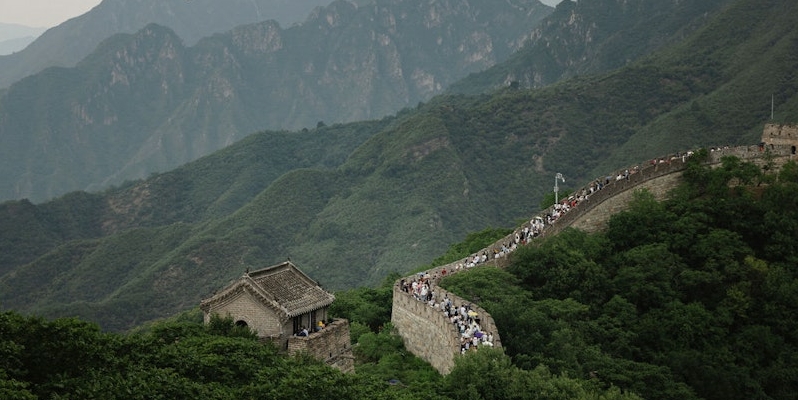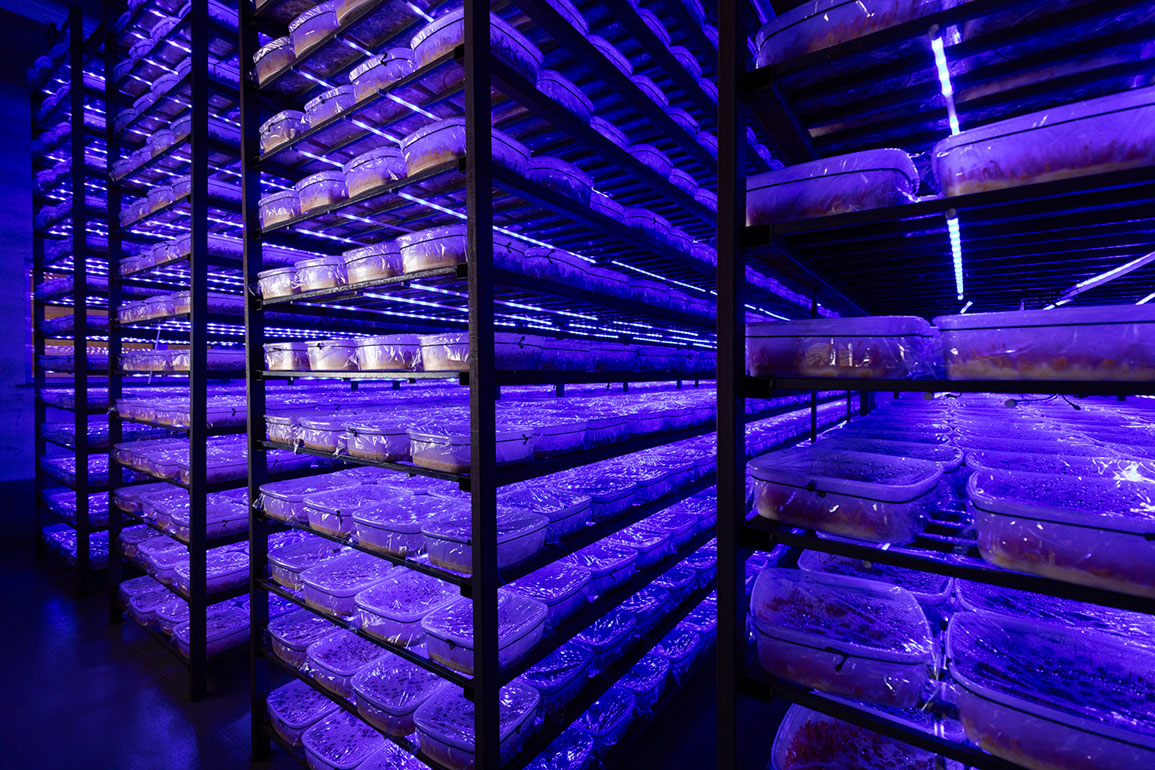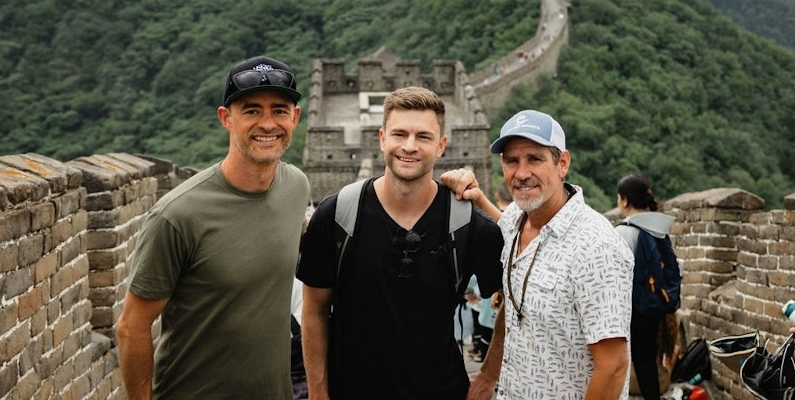
We’ve just returned from visiting our mushroom growers in China. People told us how much they appreciated reading about our trip there last December, so we wanted to share some details of our most recent journey.
We traveled to Inner Mongolia, a 6-hour drive from Daxing Airport. Daxing is currently the largest airport in the world, and 12% of its energy consumption is powered by Solar energy from Huawei FusionSolar Smart PV Solution. This 5.61 MWp project pioneered the application of clean energy in civil aviation. After grid connection, 6.1 GWh of green energy will be fed into the power grid annually, which equals to 1,900 tons of standard coal saving while offsetting 966 tons of CO2 and 14.5 tons of SO2 footprints every year.
Along the drive were far off mountain ranges that had a high desert feel. We arrived at the hotel for a Traditional Zither performance before dinner. All meals are typically served family style with the food arriving very quickly. One of the specialties in Inner Mongolia is BBQ. Healthy dishes of various vegetables, noodles, rice, meat, fish, and of course lots of mushrooms are all served in various ways. Each person helps themselves to what looks good as the food goes by, and the food never stops coming. If you remark on how tasty something is, magically, another whole dish of it appears in front of you.
Cordyceps Growers
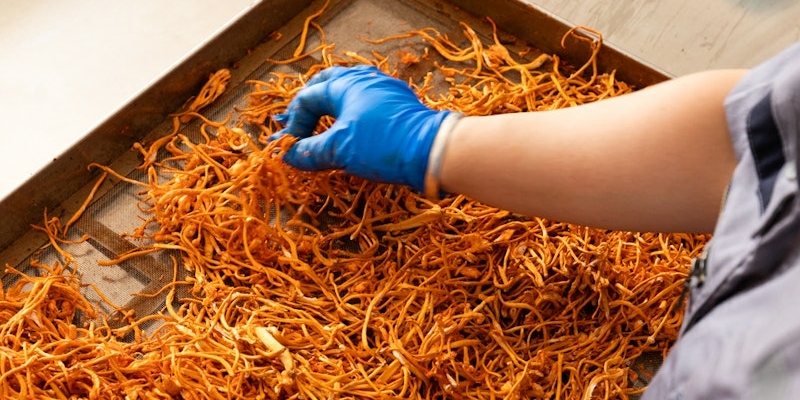
When we arrived at one of our large Cordyceps growing locations, we garbed up in Tyvek sanitary suits and went through an airlock dust control chamber, then into the facility for a tour of operations. Workers were organized, and paid close attention to sanitation.
This facility had ozone water purification and reverse osmosis for water treatment. They primarily use wheat and rice substrates for producing these cordyceps mushrooms, with ours being solely grown on rice. A mixer and auto injector are used to add nutrient fortified water into the solid substrate in preparation for sterilization. The rice and water filled tubs spend 2.5 hours in an autoclave and then cool for 8 hours. After cooling, the substrate is inoculated with cordyceps mycelium, then incubated for 7 days. Once the substrate is colonized, it will spend 14 days in two different wavelengths of light spectrum. The mushrooms are then harvested. The total cultivation time is 50-75 days.
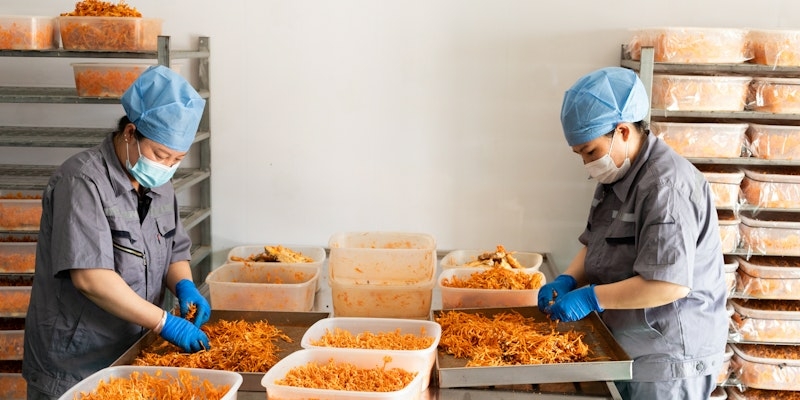
The mature mushrooms are harvested by hand. The cordyceps mushrooms are removed very easily from the substrate, so the harvest goes quite quickly. The mushrooms are immediately sorted, spread out on drying racks, and dried for 15 hours using forced hot air. The dried mushrooms are then packed and ready for shipment to our extraction facility.
For any mushroom grower, there’s always a focus on yields. More yield by time or input materials yields higher revenues but we balance this with making sure the quality stays high and for Cordyceps militaris, this means cordycepin content.
Strain selection and light conditions are the biggest factors for cordycepin, while always keeping a balance between yield and cordycepin content. This facility specializes in the optimization of cordycepin content through strain development and specialized growing techniques.. The facility has received several patents for their innovation, and their products have obtained numerous certifications for product quality and traceability.
Golden Oyster Mushroom Farm
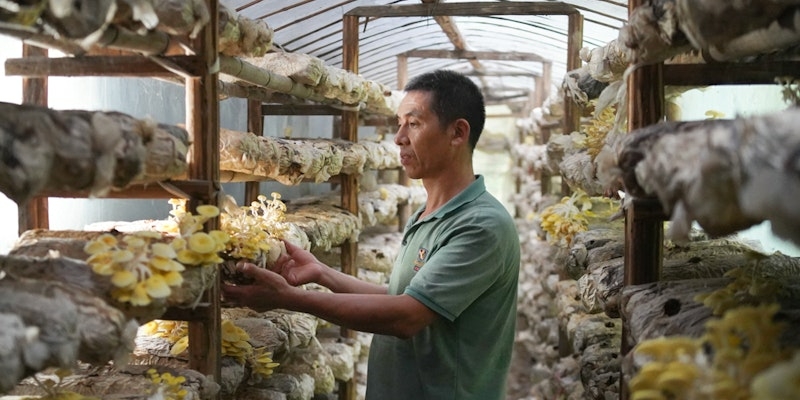
An hour away from the cordyceps growing facility was an emerging specialty grower who had Golden Oyster (Pleurotus citrinopileatus) and Morel mushrooms under cultivation. These specialty crops offer the promise of more money for the farmer, consistent with China’s efforts to reduce poverty and build a monetarily stable middle class.
We were there for the final flush of Golden Oyster Mushroom at the tail end of its growing season. They were using the typical autoclavable bag shaped like a log. The sterilized substrate used for inoculation are corn stalks and wheat bran, which are cheap and readily available local biomass sources.
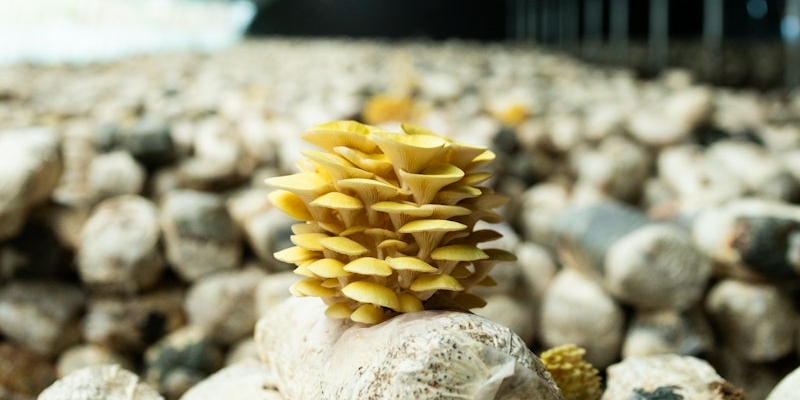
Golden Oyster mushrooms grow fast; from the start of a flush at pinning and buttons to full mushrooms is only three days. They recently installed new heaters in the grow house to control temperature along with a brand-new boiler for heat generation. After they are hand harvested, the mushrooms are transferred to a separate processing facility less than 1km away for trimming, sorting, and drying.
While most of our time was spent on farms, we did take time when the opportunity was presented for some historical appreciation.
Like most visitors to China, we organized a trip to the Great Wall of China. The Mutianyu section of the Great Wall once stood as a northern barrier, safeguarding the capital and imperial tombs and is an older section of the wall built during the Ming Dynasty (1368–1644). The wall itself was awe inspiring and the pictures and even the best video footage fails to capture the millennia of history and human accomplishment. Photos can’t compare to putting your hand on a rock that was placed by another human over 1,000 years ago.
